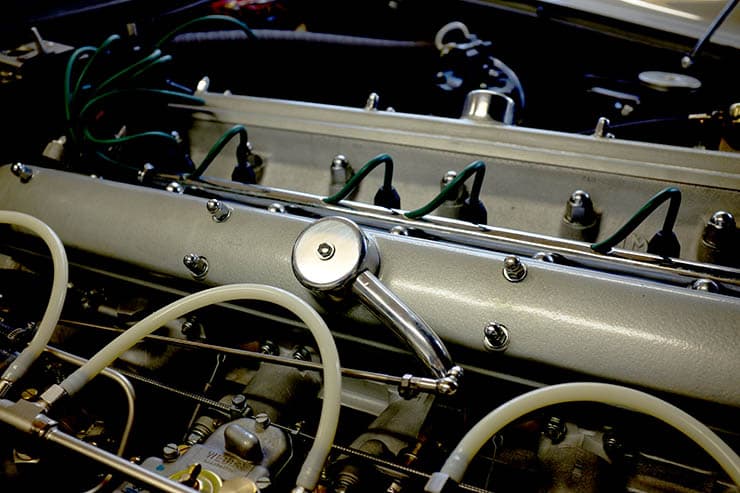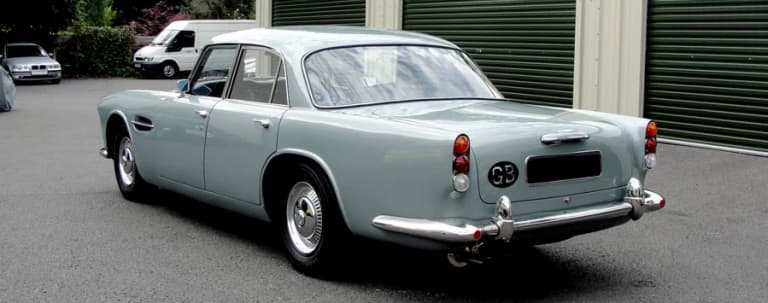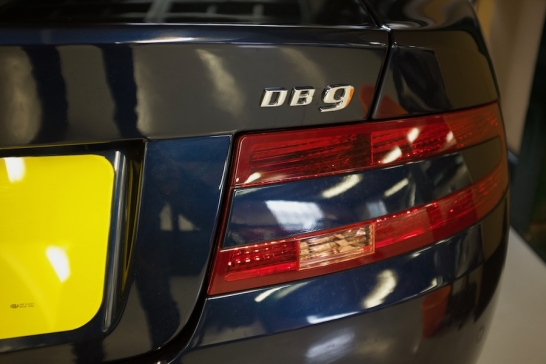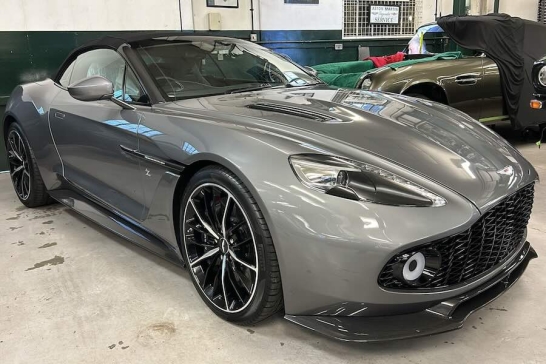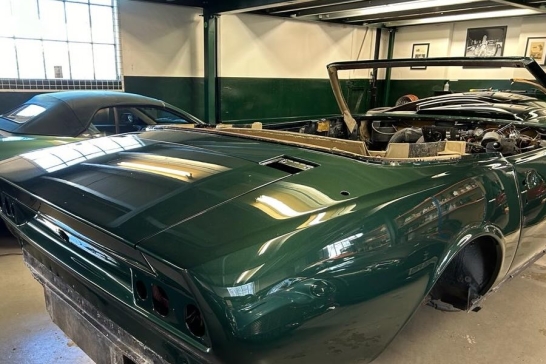It’s easy to get very serious about classic Aston Martins. The engineering excellence, the design ethos – and the timeless sense of style. These are all obviously very real and all worth discussing in depth.
Let’s not forget, however, that great cars like this are supposed to be a lot of fun. Looking at them should be fun and driving them should be even more fun. In short, your Classic Aston Martin should make you smile. We know from experience that this sometimes takes a bit of work. In fact, sometimes it takes quite a lot of work, but when we see the smile back on the face of an Aston Martin owner, we know it’s all worthwhile.
A Car Called James
One memorable case started with us going round to the client’s house to collect the Aston Martin DB5 because it wouldn’t start, which is as far away from a positive driving experience as it’s possible to get. Once we’d had a look at the car we were able to tell him that we could get it started no problem, but that there was a list of other performance upgrades we could do to it in order to make sure that it didn’t just start, it ran. And by ‘ran’ we mean ran smoothly, giving the kind of drive that puts a smile on your face whether you’re roaring down the open road or waiting at the lights in the middle of a city. Prior to this, he’d been running the car at rallies around Europe and having it break down on him repeatedly, which meant two things. First, it wasn’t easy to drive and definitely wasn’t a pleasure, and secondly, the owner's wife was reluctant to let him keep going off to break down in these rallies.
If you’d like to know how much the owner loved the car once we’d finished working on it, then think about the fact that he gave it a name, and that name was ‘James’. Never ‘the motor, never even ‘my Aston’ but always James (we were pretty convinced it was a 007 thing), and to hear him talk about James you’d think he was eulogising about his son. When he came to us, James had a juddery clutch and was leaking oil and overheating. James, to put it simply, wasn’t in a good way, but we made the owner fall in love with James all over again.
Driving in Traffic
Then there was the Aston Martin DB6 Volante that came to us having been restored by another company. This other company had admittedly done a reasonable job of the restoration on the surface, but they weren’t Aston Martin specialists, and so, while the car looked the part it ran – to use a technical industry expression – like a bit of a pig. To be a little bit more technical about the car in question, it was leaking oil and needed a huge amount of revving in order to actually take off properly. This is an example of the problem which we see in a lot of the Aston Martins that come in to be tuned up – the progression just above idle is an area which you have to get just right for a pleasant driving experience, particularly when stopping and starting and driving in traffic.

Carburettors
The owner of the Volante came to us via a recommendation and bombarded us with questions about what we were planning to do to the car, so it was obviously very important to them, and we wouldn’t be surprised if they came back to us to have more work done in the future.
One problem which we often have to deal with when tuning Astons is the carburettors they’re using. Over the years, many of them have been converted to newer carburettors which need more work doing on them, but the truth of the matter is that the original Weber carburettors were only ever around 70% effective after a while, particularly when used with modern fuels. The perception of Weber carburettors used to be that you just had to put up with the poor performance, as a driver. What that meant in practice was that they could perform adequately at speed but not in traffic, and people just accepted that as the way things were. Once we get our hands on them, however, we can get them running so that they’re easier to drive in any conditions.
How We Work Our Magic
One of the things that sets us apart from other garages that might tune and debug cars is the fact that we don’t use a rolling road dyno. For those who don’t know, a rolling road dyno is essentially a treadmill for a car, enabling the people working on it to simulate driving conditions while monitoring the performance of the car, often by hooking it up to a diagnostic computer. Many specialists will insist that it’s now impossible to do the job of tuning properly without equipment like this, but we feel that the opposite is true.

We use our sense of touch, experience and even smell (of which more later) to fine-tune the car while it’s actually out on the road, because we feel that it’s impossible to accurately simulate aspects such as slowing for a bend, or changing down and touching the accelerator at 5 or 10 miles per hour. Those are the times when a car which needs tuning will fall on its nose or start spluttering, and we can spend days and sometimes even weeks running and getting a feel for a car as we tune it and make sure it’s perfect.
Power Steering
One of the more extreme examples of the work we do on cars – over and above the details of tuning – is exemplified by the occasion on which we fitted power steering on a DB4. We’d been trying to persuade the owner to make the switch to power steering for a while, but there tends to be a prejudice against it from drivers thinking "I’ve got muscles, I’m a strong bloke, I don’t need it". In truth, that’s not what it’s about.
Power steering is about making the vehicle more nimble to drive. It takes away all that bouncing out of your hands that the steering wheel wants to do when driving over potholes, around bends and over drain covers. It turns steering into a one-handed affair, leaving your other hand free to change gear; it’s more nimble and smooth and eradicates bump steer. The key point to bear in mind though is that it’s fitted completely out of sight, hidden behind the dashboard, apart from the control knob, which is positioned discreetly behind the instrument binnacle.
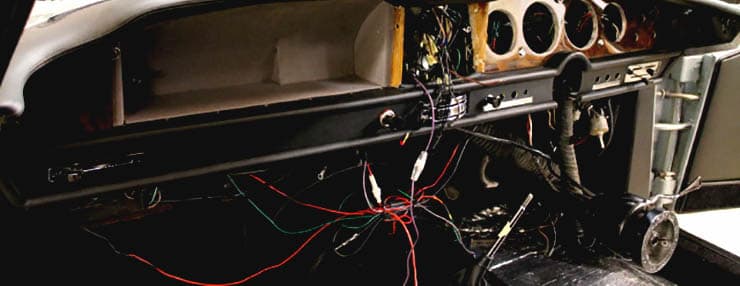
So the car is completely transformed but nothing is done which damages the iconic appearance. This is in marked contrast to the practice being adopted by some people of using fuel injection kits which isn’t really needed and takes the car away from the standard. Fuel injection might camouflage issues, but it doesn’t really deal with them.
All Round Improvement
The point about the kind of tuning which we do, and the reason why it puts a smile on the owners face, is that it also improves factors like fuel efficiency and even the smell which, in original DBs could be a problem for drivers sitting at the lights. Give us your car to tune and you can idle for as long as you like without any unpleasant odours emanating from the engine. To put it in blunt terms, an owner can bring an older Aston Martin to us because it’s ticking over without running properly, it stinks and it isn’t any kind of pleasure to drive. A few weeks later they drive away from us and it’s running as clean as a whistle. That makes us feel pretty good - as well as putting a smile on their face.
